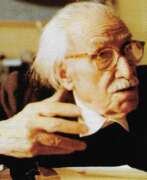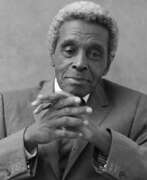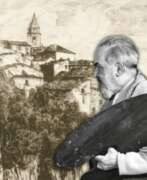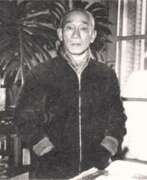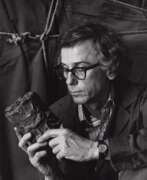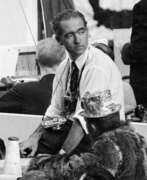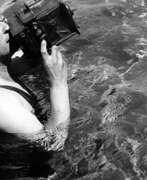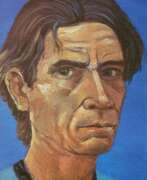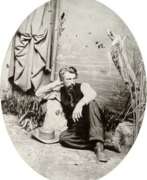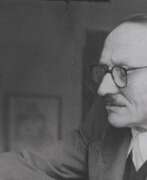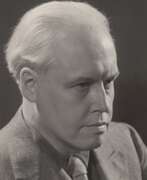Journalists Portrait
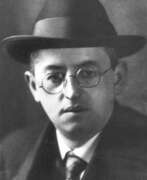

Josef Čapek was a Czech artist, writer, and journalist. He was the younger brother of writer Karel Čapek. Josef Čapek studied at the School of Applied Arts in Prague and later in Paris, where he was influenced by Cubism and Surrealism.
Čapek was a prolific artist, working in various mediums including painting, printmaking, and illustration. He is perhaps best known for his work in the area of puppetry, having created a number of puppet shows that were popular in Czechoslovakia during the 1920s and 1930s. His puppets were known for their expressive faces and whimsical designs.
Čapek was also a writer and journalist, and he wrote plays, essays, and articles for various newspapers and magazines. He was a member of the Czechoslovakian avant-garde group Devětsil, which promoted modern art and literature in the country.
During World War II, Čapek was arrested by the Nazis for his anti-fascist views and was sent to the Bergen-Belsen concentration camp. He died there in 1945, just weeks before the camp was liberated by Allied forces.
Čapek's legacy as an artist and writer is significant, and he is considered one of the most important Czech artists of the 20th century. His work is represented in many collections around the world, including the National Gallery in Prague and the Museum of Modern Art in New York.


Eduard Adolf Daelen is a German artist, writer, and journalist.
He studied at the Düsseldorf Academy of Art and the Munich Academy of Fine Arts. Daelen was a member of the Malkasten Society of Artists (Malkasten) and was chairman of the local association Allgemeine Deutsche Kunstgenossenschaft. During World War I he took up drawing patriotic posters and war postcards.
Daelen also became known for the first biography of Wilhelm Busch, which he wrote in 1886. He also wrote art history articles that were published under pseudonyms in various newspapers.
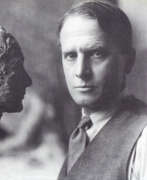

Ernesto de Fiori was a German artist of the first half of the twentieth century of Italian-Austrian origin. He is known as a sculptor, draughtsman, and secular portraitist and is considered one of the leading artists of the Weimar Republic.
Ernesto de Fiori made a name for himself as a sculptural portraitist in Berlin during the so-called "Golden Twenties". He portrayed such celebrities as movie actresses Greta Garbo and Marlene Dietrich, boxer Jack Dempsey, Field Marshal Paul von Hindenburg. In 1936, the artist emigrated to Brazil and took up journalism. In 1937, the Nazi campaign to expose "degenerate art" led to the removal of his sculptures and graphics from German museums.
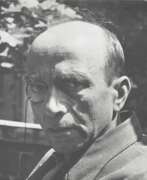

Paul Gangolf, real name Paul Löwy, was a German expressionist painter, lithographer, woodcarver and journalist.
Paul was born into a Jewish family, began his work with articles in magazines on political topics, using the pseudonym Gangolf, during the First World War he served in various troops.
The peak of Paul Gangolf's creative activity came in the 1920s, when he worked in lithography, published and exhibited in Berlin, London and Paris.
After the National Socialists came to power, he was arrested and taken to the Esterwegen concentration camp, where he was murdered. Already after his death, in 1937, as part of the "Degenerate Art" campaign, Gangolf's paintings were confiscated from museums in Nazi Germany and most were destroyed. Surviving works by the artist can be found at the Museum of Modern Art in New York and others.
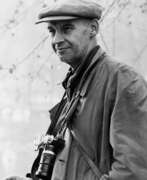

Aleksander Mikhailovich Rodchenko (Russian: Александр Михайлович Родченко) was a pivotal figure in the avant-garde movement of Russian art, whose innovative work spanned painting, sculpture, photography, and graphic design. Born in Saint Petersburg in 1891, Rodchenko emerged as a leading artist in the early 20th century, deeply influenced by the cultural upheavals of his time. His commitment to experimentation and his pursuit of new artistic forms and methods made him a central figure in the development of Constructivism, a movement that sought to apply art to practical and social purposes.
Rodchenko's art is characterized by its bold experimentation with perspective, form, and color. His photographic work, in particular, showcased his fascination with unusual viewpoints and his ability to transform ordinary subjects into dynamic compositions. This approach not only redefined photographic practice but also reflected his belief in the artist's role in constructing a new visual environment. Among his most recognized works are his series of abstract paintings, his design for the poster "Books (Please)! In All Branches of Knowledge," and his groundbreaking photography, which continues to influence artists today.
Rodchenko's contributions to art and design extend beyond his own creations. He was an influential teacher at the Higher Technical-Artistic Studios (VKhUTEMAS), a hotbed for avant-garde ideas and practices. His works are held in major museums and galleries worldwide, including the Museum of Modern Art in New York and the State Tretyakov Gallery in Moscow, testament to his enduring legacy in the art world.
For collectors and experts in art and antiques, Rodchenko's work offers a fascinating insight into the revolutionary spirit of early 20th-century Russian art. His innovative approach to form, combined with his commitment to using art as a tool for social change, makes his work highly sought after and continually relevant.
To stay informed about new product sales and auction events related to Aleksander Mikhailovich Rodchenko, sign up for our updates. This subscription is your gateway to the latest in the world of art collecting, ensuring you don't miss out on acquiring pieces from one of the avant-garde's most influential figures.
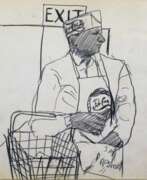

Robert Weaver was an American illustrator who was considered a pioneer of a contemporary approach to the field that began in the 1950s. Beginning in 1952, he embarked on a mission to combine the visual ideas found in fine art with the responsibility of journalist. He used a pencil to observe, record facts, and draw real life based visual essays. This approach would later be termed "visual journalism". Weaver is known for bringing the narrative qualities of cinematic storytelling to his profession. For five decades, Weaver created work for clients such as Esquire, Fortune, Sports Illustrated, Life, Look, The New York Times and Columbia Records.
